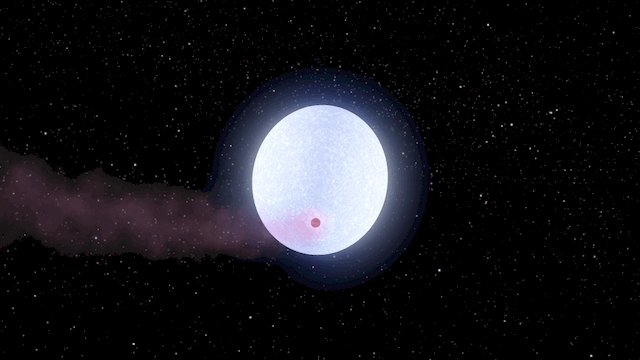The Great Exoplanet Bake-Off: Why NASA Made an Oven-Fresh Alien Atmosphere in Its Lab

Scientists at NASA's Jet Propulsion Laboratory (JPL) in California have developed a simple new recipe for baking oven-fresh alien atmospheres — and you can follow along at home, thanks to a handy study published Jan. 29 in The Astrophysical Journal.
All you need is a beaker of hydrogen gas, a pinch of carbon monoxide and an oven set to 2,200 degrees Fahrenheit (1,200 degrees Celsius). Coat the mixture liberally with ultraviolet radiation, then bake for 200 hours. Violà! You now have your very own exoplanet atmosphere, ready for analysis. (Please do not eat the alien atmosphere.)
Why did NASA go all Betty Crocker on outer space? The agency was trying to solve a puzzle about a class of exoplanets known as hot Jupiters— gas giants that sit so close to their host suns that they whoosh through a complete orbit in less than 10 Earth days. [9 Scientific Excuses for Why Humans Haven't Found Aliens Yet]
As you can probably intuit from the name, hot Jupiters are scorching — often reaching temperatures of roughly 1,000 to 5,000 F (530 to 2,800 C), the JPL team said in a statement. They're also bombarded by ultraviolet (UV) radiation from their nearby sun.
This extreme living arrangement makes hot Jupiters brighter than many exoplanets and easier to study in depth. A handful of the thousands of known exoplanets fit in this category and, unlike most of the planets beyond our solar system, astronomers can often recognize a hot Jupiter by imaging their atmospheres in various wavelengths of light. Those atmospheres tend to be very hazy, even at high altitudes and in low-pressure regions where clouds couldn't likely form.
The NASA JPL team wanted to know why. So, the team members tried to make their own hot Jupiter atmosphere in the lab using a very, very strong oven.
Previous work, such as this 2016 study in the journal Space Science Reviews, has suggested that hot Jupiter atmospheres likely contain lots of hydrogen gas (the most abundant molecule in the universe) and a bit of carbon monoxide (CO). So, the team made a hydrogen-heavy mixture with a pinch of 0.3 percent CO and heated it to various temperatures, peaking at 2,240 F (1,230 C).
Get the Space.com Newsletter
Breaking space news, the latest updates on rocket launches, skywatching events and more!
Simply heating this bootlegged atmosphere failed to produce the desired haze. However, bathing the mixture in UV radiation did. After more than a week of radiation exposure in the oven, the ersatz atmosphere finally developed a shroud of aerosols — solid particles suspended in gas, like fog hanging over a city skyline. And that produced the haze they were looking for.
"This result changes the way we interpret those hazy hot Jupiter atmospheres," lead study author and JPL researcher Benjamin Fleury said in the statement. "Going forward, we want to study the properties of these aerosols … how they form, how they absorb light and how they respond to changes in the environment."
This study provides the first evidence that radiation plays a key role in crafting the shell of haze around hot Jupiters. The radiation-fueled reactions in JPL's oven also produced trace amounts of water and carbon dioxide, which gives astronomers a few more clues to look for when scanning the universe for these hefty exoplanets.
- Science Fact or Fantasy? 20 Imaginary Worlds
- Rainbow Album: The Many Colors of The Sun
- 15 Unforgettable Images of Stars
Originally published on Live Science.
Join our Space Forums to keep talking space on the latest missions, night sky and more! And if you have a news tip, correction or comment, let us know at: community@space.com.

Brandon has been a senior writer at Live Science since 2017, and was formerly a staff writer and editor at Reader's Digest magazine. His writing has appeared in The Washington Post, CBS.com, the Richard Dawkins Foundation website and other outlets. He holds a bachelor's degree in creative writing from the University of Arizona, with minors in journalism and media arts. He enjoys writing most about space, geoscience and the mysteries of the universe.










